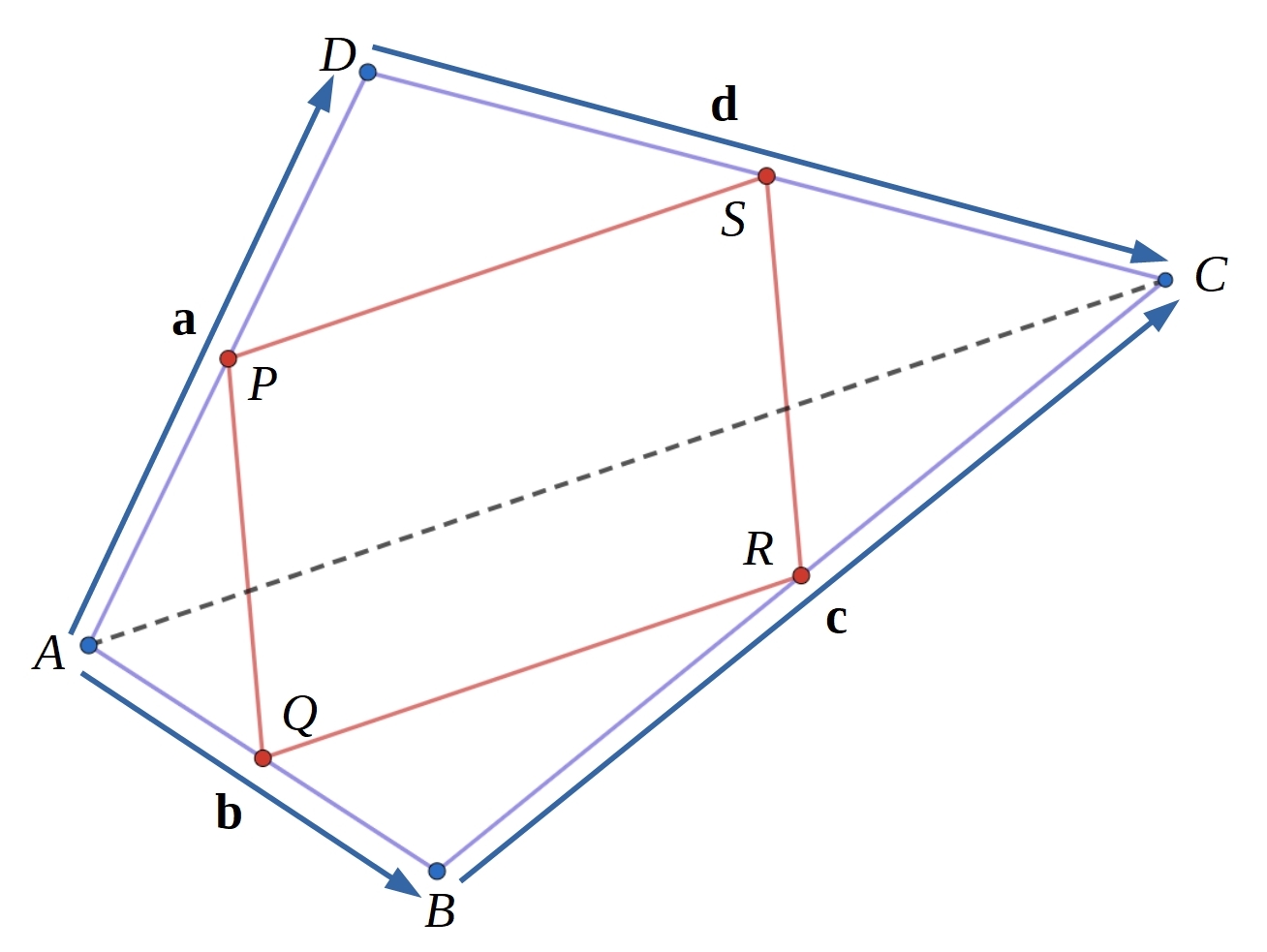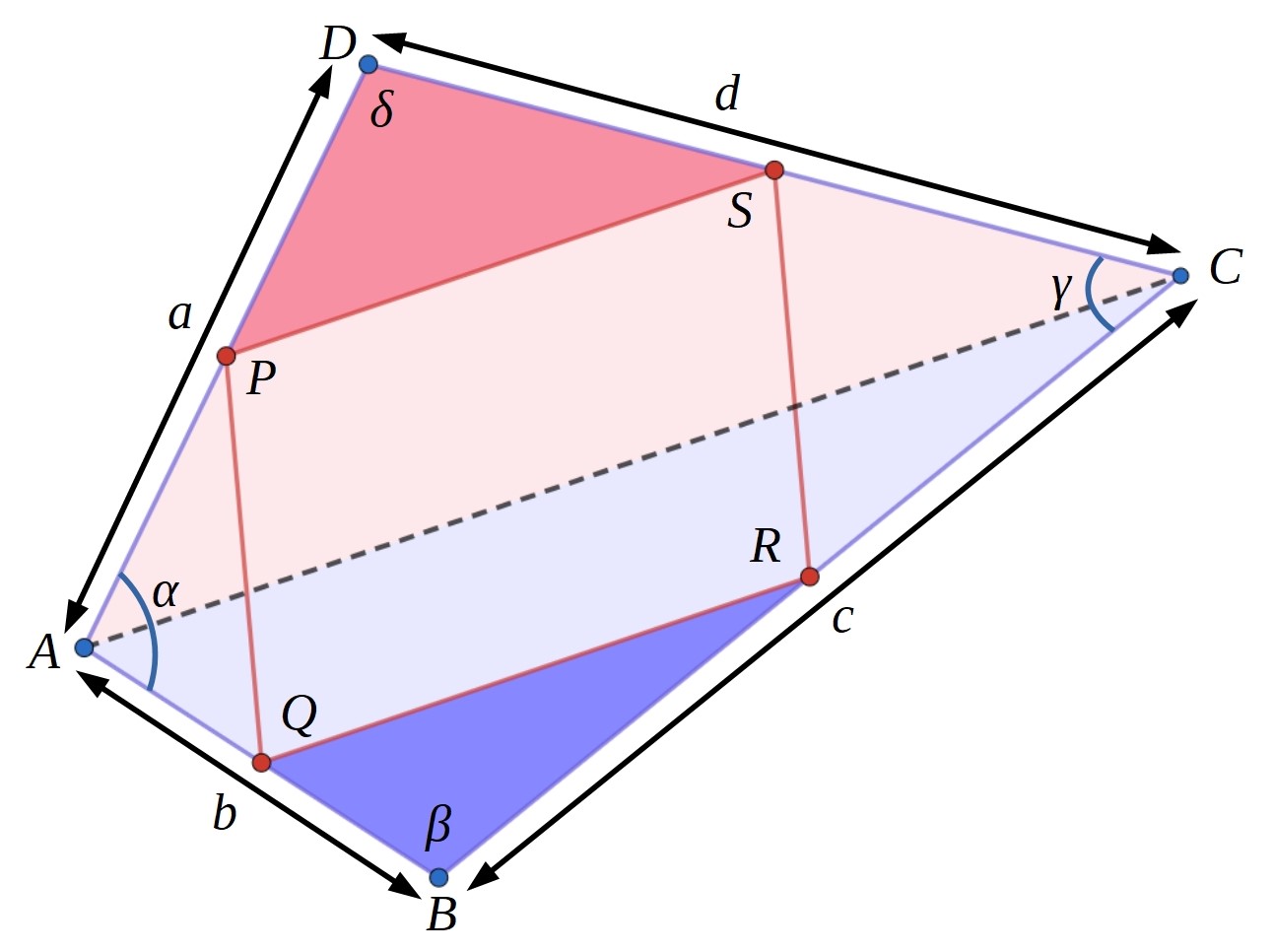Copyright © University of Cambridge. All rights reserved.
'Quad in Quad' printed from https://nrich.maths.org/
Show menu
Quad in Quad printable sheet
Printable dotty paper
Draw any convex quadrilateral and find the midpoints of the four edges.
Join the midpoints to form a new quadrilateral.
A convex quadrilateral is one where all of the angles are less than $180^{\circ}$. Alternatively you can use the definition that both diagonals lie inside the shape.
Try it a few times starting with different convex quadrilaterals.
What do you notice about the new quadrilaterals formed by joining the midpoints?
Does this always happen?
Can you find a counter-example?
Can you make a conjecture?
You may wish to use the GeoGebra interactivity to explore what happens as you move points A, B, C and D.
Can you prove your conjecture?
Is the area of PQRS always the same fraction of the area of ABCD?
Can you explain why?
Once you have had a think about this, you might like to take a look at these two different proofs which have been scrambled up. Can you rearrange them back into their original order?


Do these results still hold if ABCD is a concave quadrilateral?
A concave quadrilateral is one where one angle is greater than $180^{\circ}$, for example you could draw an "arrowhead" shape.
If you can find a proof which is different to the ones in our proof sorters, then please do let us know by submitting it as a solution.
We are very grateful to the Heilbronn Institute for Mathematical Research for their generous support for the development of this resource.